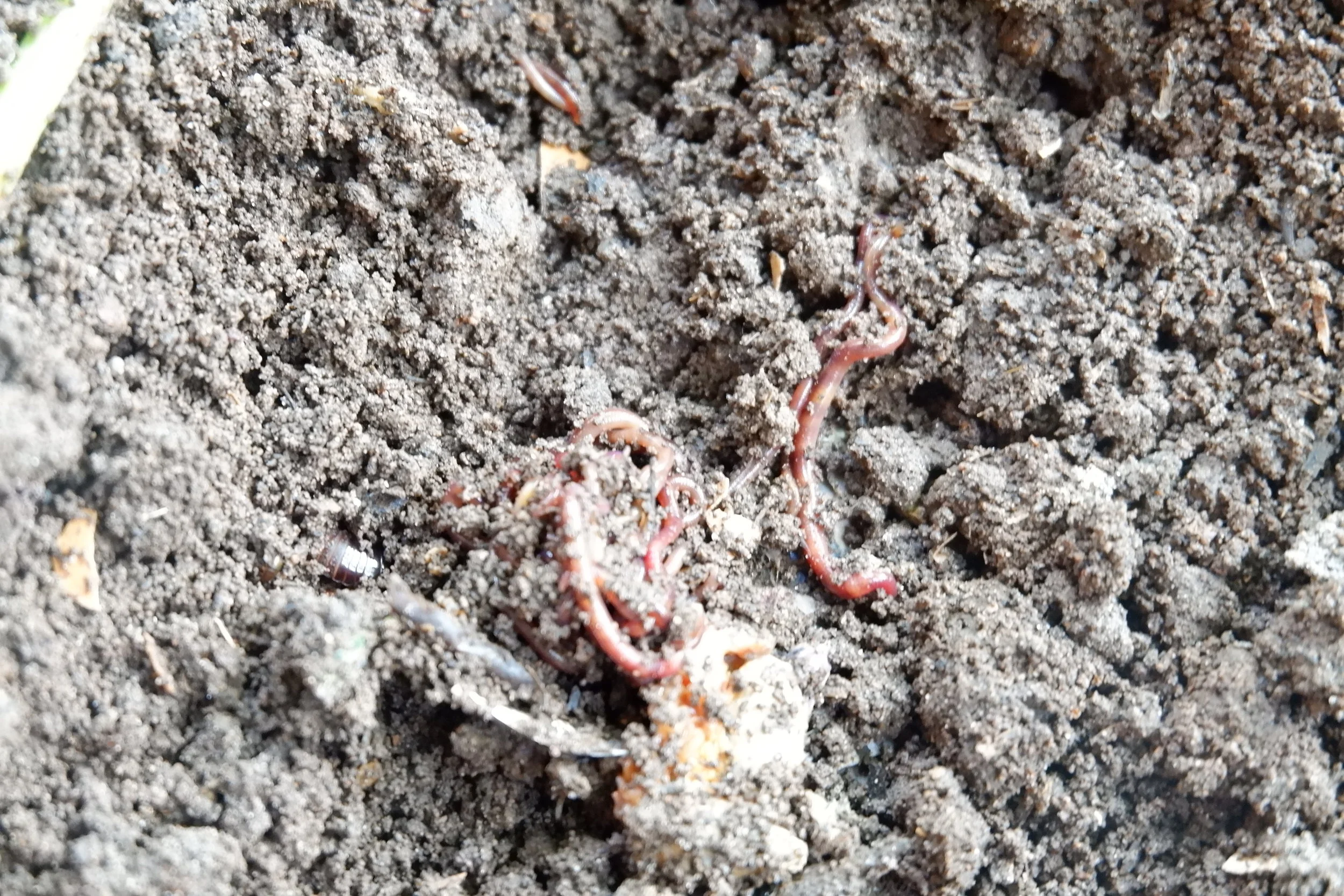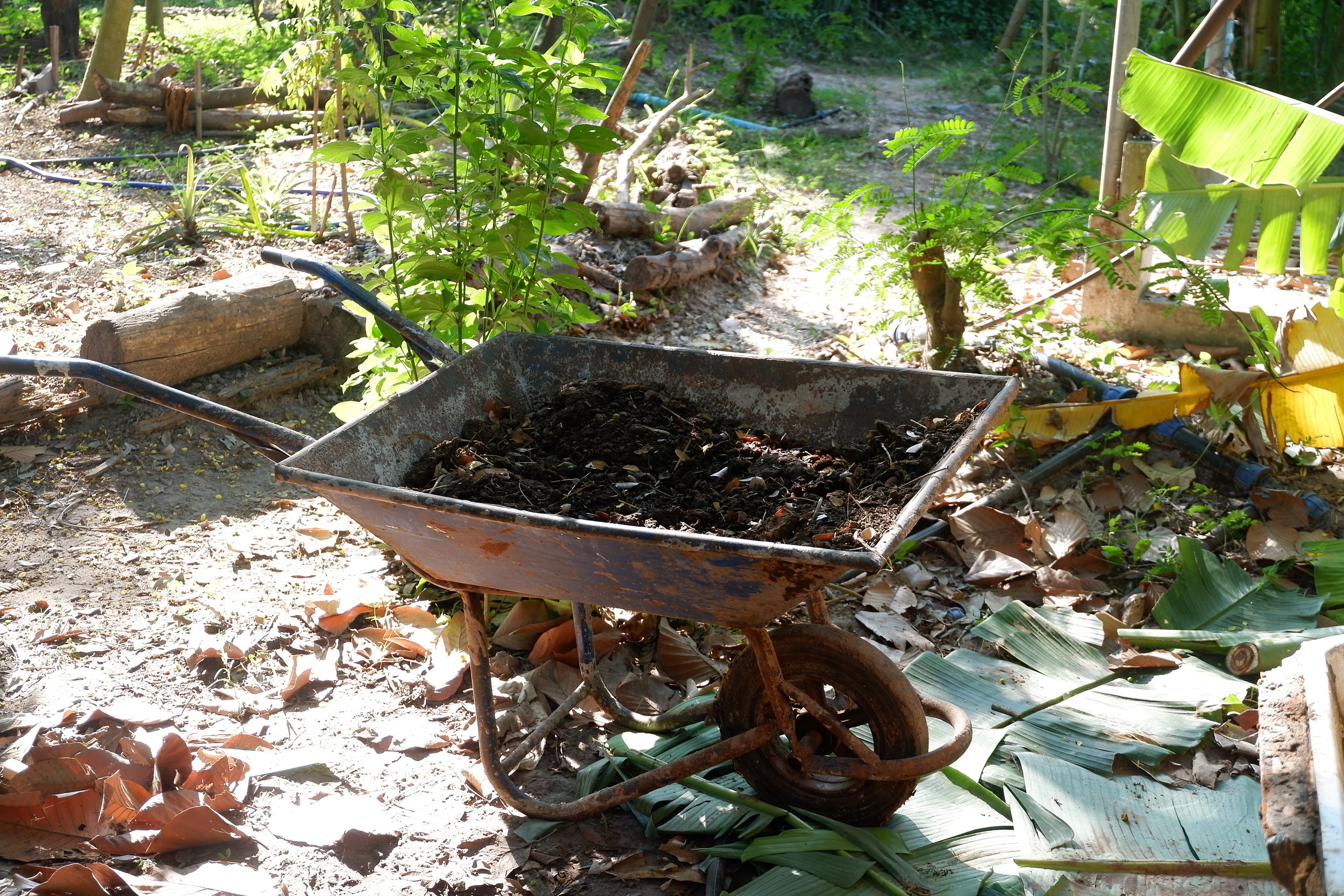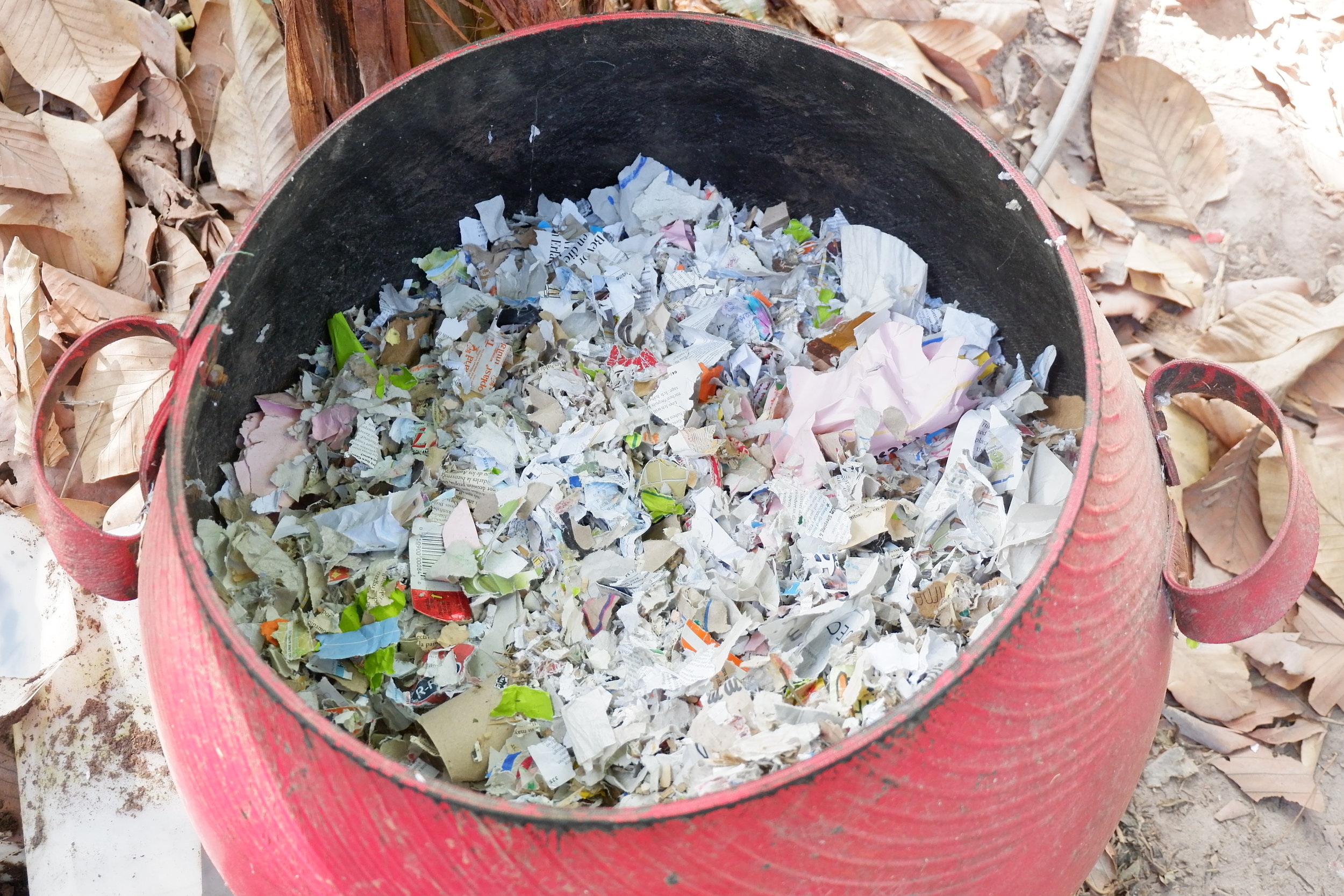How to nourish your soil using the recycling power of worm composting? 5 steps to set up your worm farm
How to nourish your soil using the recycling power of worm composting?
5 steps to set up your worm farm providing the 3 main needs of a red wiggler
This week we moved our worm farm closer to the kitchen to ensure a more regular food supply and care and love for our worms. We also are using the worm compost on a regular basis in our garden beds and want to have a higher and more stable production of worm compost.
We separated the worms from the dark and rich compost and build up a new home for our worms including new interior (bedding). This article sums up this process and provides you with basic information of worm farming, highlights some benefits and also shows you how easy it is to set up a productive worm farm in 5 steps.
If you want to experience and learn more about composting and the power of worms, you might want to join our next 17-day PDC starting in March 2020. Get all the information right here! For everyone registering before February 15, we have an early bird special for 20,200THB (650USD). Get yourself registered and be part of the new Permaculture Design Certificate Course in 2020 in Thailand!
Author: Lars Blume
Gaia Ashram’s community worm farm close to the kitchen.
What is worm compost good for?
You can use your vermicompost for fostering plant growth and increasing your harvest in many ways. You can mix it with your regular compost for a homemade pottery mix and provide your seedlings with an extra portion of nutrients. Worm compost is available in small quantities but so full of good things that you might sprinkle it over your garden beds, create fertile pockets for your most demanding and deserving plants. You can also use it to start a compost tea that multiplies the microorganisms and spread the tea on your soil or as pest control on your plants.
Which are the right worms to go for?
The red worms or red wigglers (Lumbricus Rebellis) are able to consume large amounts of household garbage, reproduce quickly and are quite tolerant to being disturbed in their habitat. Although they are not very large in size, the red worm is mature in 9 month, reaching 7 cm on average. They are reproducing every 7 days, what makes it very fast to increase your worm farm scale.
Small worms producing large amounts of super compost.
Separating the finished compost from the red wigglers and giving it back to the nutrients cycle.
How to set up a worm farm?
You just need two things to set up your worm farm: red wigglers and a bin. Because they are multiplying so fast you can easily add more bins after a while. Starting small first and observing how much vegetable scrubs you actually produce on a regular basis will help you to find the right size of your worm farm.
Get a bin. We went for the inlays of old fridges as they have a perfect size for one part of your worm farm, but of course you can build them using wood or other reclaimed bins that are of the same size. You can go for nearly any size that fits to your surrounding area. We went for 100 x 50 x 40 cm for each bin. As a rule of thumb, for every pound (0.5 kg) of kitchen waste produced each week the worm box needs a footprint of 1m2. This corresponds, for example, to a box measuring 25 x 40 cm.If you use wooden structures they need to be protected by plastic liners. Look for already used plastic such as plastic bags or sheets.
Add the bedding. Red worms love moist newspaper bedding. Shred used paper (not colored) in small pieces in order to provide air, water, and food for the worms. Water it till it is nice and moist and keep on adding newspaper till it fills up to 3/4 of the worm farm. If you are ok with using animal manure in your garden practice you can also add some horse or cow manure. You could even add some human manure to multiply your population.
Reclaimed inlay of fridges makes great boxes for hosting worms.
Shreded paper and a little water makes a perfect bedding for compost worms.
Place the worms. Ask around in your community and neighborhood to get some worms from the region. Place them in your worm farm and let them settle in. It is helpful to remember the amount of worms you put in the beginning to ensure that you are feeding in the right amount of kitchen scraps. You can use the weight or the volume to get an idea. If you cannot find any worm farmers next to you, you might go to a shop for fishery supply to get some.
Paper bedding and some first food for the worms.
Feed food scraps. Feed the worms with a balanced amount of green and brown organic matter and burry the food scraps under the bedding to keep flies and smell away. Place a full sheet of dry newspaper on top of the bedding. This will help maintain the moisture and once more eliminate smell and flies from your bin.
Cover your farm and choose a spot. Cover the bin with a lid made of plastic, plywood or cloth, but leave the lid a little open, so the bin receives some air. If desired, you may even drill some holes into the walls of the bin. If you place your small worm farm insight your house or appartment just ensure it is away from windows and heaters. Outside it is good to find a partly shaded spot, so it is not getting too hot.
The finished worm farm next to our kitchen.
What to feed the worms and how to keep the red wiggler happy?
To keep your worms happy ensure that you provide them with the right amount of these 3 key elements: food, moisture and oxygen.
1. Feed them regularly or whenever they are running out of food. You will figure out how often you need to feed them by observing your worm farm (once or twice a week).
2. Keep the bedding (shredded paper) moist by spraying some water.
3. Loosen the bedding every two weeks to ensure that your worms are provided with enough air.
What do worms eat?
When you feed your worms, add equal portions of greens and browns:
Greens: Vegetable and fruit scraps, coffee grounds and filters, teabags, plant residues
Browns: Newspaper, paper, cardboard, dry leaves
In order to make your bin less attractive to flies and keep the smell away you might avoid the following items:
Avoid: Cooked food, citrus, spicy foods, meat and dairy products
Go for small pieces. Chopping large chunks of food to feed worms is recommended but not necessary. If you add smaller pieces they will break down faster and speed up your composting process.
Beautiful mix of vegetable scraps.
Kitchen left overs are working well for feeding worms.
Can I do more for my worms?
Ensuring the sufficent amount of food, moisture and oxygen is key. However, your worms might appreciate more care and love, in exchange for some super compost.
Under perfect conditions, worms can eat up to half their weight in food per day. Keeping the moisture at the right level and ensuring darkness will help to keep your worms happy. Try to disturb them not more than necessary. Before adding more food to your worm farm check if they processed all the food you added before. If there are any leftovers it is good to slow down the feeding process for a while, let the population grow and slowly increase the amount of food you are adding after a while.
Worms need something gritty to grind up the paper and food you are providing, like soil, sand or sawdust. Make sure to add some in the beginning and add more from time to time to ensure that they are able to get your food scrubs done.
As red wigglers live in the moist newspaper bedding, make sure to take out the compost on a regular basis and add more newspaper regularly. This is a great way of keeping your worms happy and productive.
Happy worm farming
Want to learn more?
Gaia Ashram together with NextGenoa and flowful will organize a Permaculture Design Certificate (PDC) COurse between March 25 and April 10 at Gaia Ashram Thailand. You can find more information here or just drop us a message; we’re happy to hear from you.
At the moment we are designing the courses for our summer break (May/June) in Germany. We will have several weekend courses and also a PDC-Course happening. To get more information just write us a message; we will keep you posted.
If you want to experience a design process join one of our workshops or invite us to your property and become the host for the next workshop. Just drop us a mail for further information. Or just subscribe for our monthly newsletter.
Furthermore you can join Gaia Ashram an community based education centre as a volunteer and learn more about gardening, spirituality and nature connection, For futher information check www.gaiaschoolasia.com.










A well-designed and managed vegetable garden can produce a lot of food, even on a small plot of land. This article explores the 7 key success factors for growing vegetables for temperate and tropical climate and gives recommendations how to manage each factor.